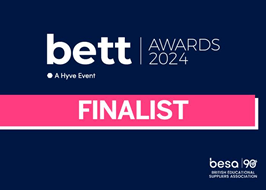Assessment and feedback
There are three ways students can be assessed using these resources:
- Progress tracking sheet.
- Oral feedback.
- Assessment point programs.
Progress tracking sheet
Use our manual progress tracking sheet to monitor how well students are progressing through the scheme.
Share the tracking sheet with students either on the board at the front of the class or individually through Office365, Google Classroom etc.
It is not necessary for all students to complete all programs in each level, they probably won't have enough lesson time to do that. The Mission Encodeable programs are also completely optional and are provided for additional practice and fun.
Award progress by stars...
As students complete programs they should mark them off on the sheet with a Y to indicate a practice program has been finished or the number of stars the program is worth. Colour code the cell yellow to indicate they are waiting for their teacher to assess their program or green after oral feedback has been given.

...or award progress by points
As an alternative, you can track progress by points instead. This credits a student for everything they do, including completing the learning programs, Mission Encodeable projects and assessment point programs. As students complete programs they should colour code the cell yellow to indicate they are waiting for their teacher to assess their program. Teachers then award points for the program and colour the cell green. Learning programs are worth 2 points, one-star programs are worth 8 points, two-star programs are worth 12 points, three-star programs are worth 16 points, Mission Encodeable learning projects are worth 2 points and Mission Encodeable capstone projects are worth 16 points. A student gets one point for each mark they achieve in an assessment point program. If the student needed to use a flowchart to help them, the program is only worth half points. If the student needed to use a Parsons problem to help them, the program is only worth quarter points.

Keeping pace
To prevent students falling too far behind, add dated checkpoints into the tracking sheet. It is essential that all students complete the first nine levels before they sit their GCSE examinations. Intervention may be necessary to accelerate progress, or reducing the challenge by reducing the requirements for the number of stars to complete in each level.
Oral feedback
Oral feedback is far more effective than written feedback for programming. When students have completed a program they should call their teacher over so that you can look at their solution together. Use the oral feedback framework to structure conversations with the student and identify areas of improvement for future programs.
With larger classes you may not have time to evaluate every program. You can be selective and review only a couple of programs in each level. Mark a program off on the progress tracking sheet even if you choose not to review it.
If your school requires evidence of feedback, ask the students to write some simple notes of the key points and outcome of your discussion with them. They can write this in an exercise book, or store it in a word processed "programming log".
Assessment point programs
At the end of levels three, six and nine there is a program that students can undertake to assess their understanding and computational thinking. It is suggested that students should aim for "mastery" - ensuring that what has been learned so far is embedded before moving on. Programs in later levels get progressively more demanding, so students will increasingly struggle to make progress if what they have learned so far is not secure.
Ideally students should tackle the assessment point programs when they are ready to do so. However, if you have identified dated checkpoints to ensure sufficient pace you may want to deliver the assessment to all students at the same time.
Students gain a mark for each part of the success criteria they achieve. The criteria get progressively more difficult as the program builds so students should stop when they are unable to complete the rest of the program. Marking these assessments could be intensive for the teacher so consider using self or peer marking instead. The marking is a simple did they or didn't they achieve the bullet point. E.g.
In the main program:
- Output to the screen the statement, “A fox, chicken and a bag of grain wait by the side of a river.”
- Assign four integer variables called, `fox`, `chicken`, `grain` and `farmer` to be 0.
- Ask the user to input fox, chicken, grain or farmer. This is to be stored in a variable called `choice`.
3 marks
Students should aim to achieve 80% of the marks. If they are unable to do so they need more practice on the levels achieved so far. Use programs that the student did not tackle initially to achieve this, or fun programs from Mission Encodeable. Students should retake the assessment as many times as they need to, ensuring mastery.
